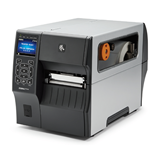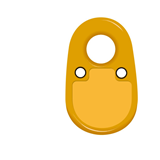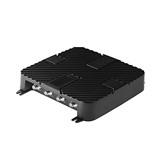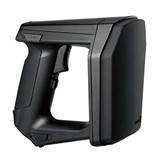RFID will begin to experience broader industry adoption with business value-focused implementations toward the end of 2006 when new license revenue totals US$751 million. By 2010, Gartner forecasts worldwide RFID spending to surpass US$3 billion.
"Just because bar codes are used extensively in distribution centers does not mean RFID will be," said Jeff Woods, research vice president at Gartner. "Businesses are beginning to discover business value in places where they cannot use bar coding, which will be the force that moves RFID forward. As the innovators' trials become public, broader deployments across emerging sectors, not just consumer goods and retail, will become evident in 2006 and 2007."
Gartner analysts said companies should not think of RFID tags as a replacement for bar codes. The two technologies will coexist with users applying the right data collection technology for the right process situation.
"For the most part, bar codes are better at collecting data in highly structured and engineered processes, such as warehouses, and this will likely continue for the next five to seven years," Woods said. "However, RFID tags will be used for data collection of mobile assets and in largely chaotic or unstructured business processes, ranging from retail environments to hospitals, enabling these environments that lack sophisticated process engineering or controls to be systematically managed."
"In many cases, RFID will be used in areas where the process is not controlled by an incumbent business application," Woods said. "Contrary to the notion that companies will need to "integrate" RFID data into established transactional applications, companies will likely need to develop new business applications if they want to put RFID at the center of a process. In this, the opportunity for real process innovation exists."
Aside from asset tracking, each industry will have specialised applications of RFID that cannot be generalised. Although industries can learn from each other, industry-specific development experiences will largely set the pace for adoption in each industry. Industries with the greatest opportunities to use RFID include retail and aerospace and defense, while the healthcare, logistics and pharmaceutical industries will adopt RFID the fastest.
"There is a significant focus on using RFID in pharmaceutical manufacturing because of the U.S. Food and Drug Administration's interest in using RFID tags to help combat diverting and counterfeiting," Woods said. "If regulatory activity proceeds, we'll likely see the beginnings of widespread tagging around 2007."
There is a considerable amount of activity in third-party logistics and shipping companies, but many of the RFID technologies remain immature. RFID has been promoted as a way to help secure ports; however Gartner analysts said the technology is not best suited for this role.
RFID is an automated data collection technology that uses radio frequency waves to transfer data between a reader and an RFID tag to identify, track or locate that item. RFID does not, specifically, require physical sight or contact between the reader/scanner and the tagged item.
Gartner has published a series of reports that provide detailed analysis on the future of the RFID. In the 78-page report "RFID Enables Sensory Network Strategies to Transform Industries." This report examines the factors affecting RFID adoption, as well as the impact RFID has on vertical industries. Gartner has also released its inaugural RFID market size, share and forecast report "Market Share and Forecast: Radio Frequency Identification, Worldwide, 2004-2010."




